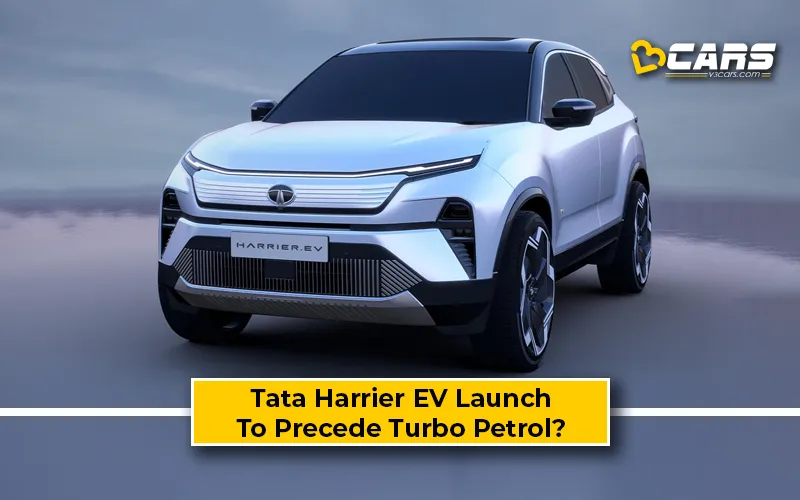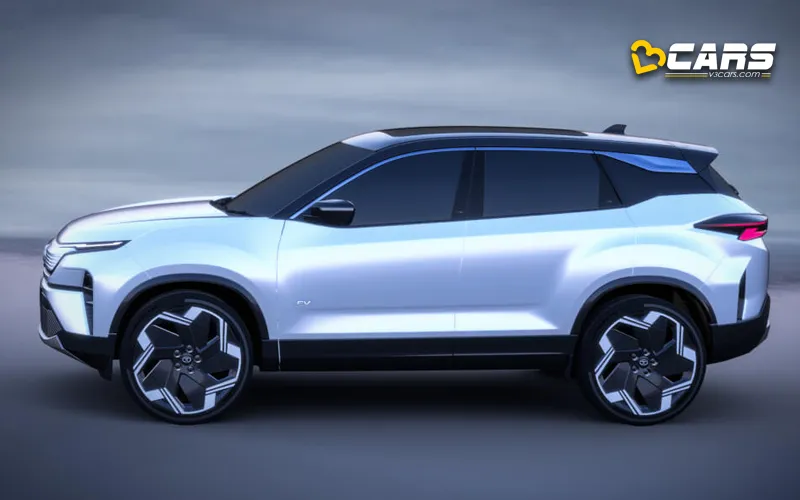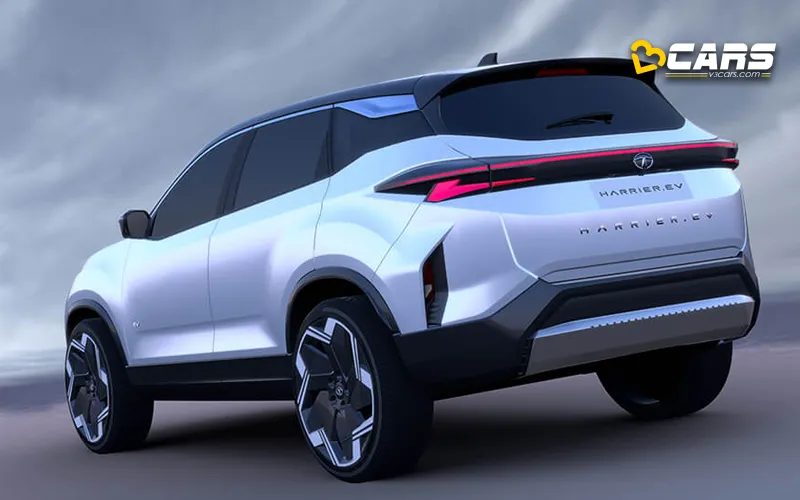Tata Harrier EV Likely To Launch Ahead Of Harrier Turbo Petrol

Tata Harrier EV – What Is It?
The Tata Harrier EV was showcased as a concept at the Auto Expo 2023. At the time, we reported that the Harrier EV would go on sale in 2024 and could be the first Tata since the erstwhile Safari body-on-frame SUV to feature 4-wheel-drive. The Harrier EV showcased at the auto show featured design elements inspired by the Curvv concept SUV, which has now trickled down to the Nexon and Nexon EV facelift as well as the newly launched Harrier and Safari facelifts.

While Tata are yet to reveal the powertrain specifications of the upcoming Harrier EV, we know that it will be based on the company’s Gen 2 EV architecture, which is an updated version of the Land Rover-derived Omega-Arc platform that underpins the ICE Harrier and Safari. The Gen 2 EV architecture will also underpin the upcoming Tata Curvv EV. We expect the Harrier EV to come with a dual motor setup and offer a range of around 500km per charge.
Tata’s 1.5L Turbo Petrol – Debut Delayed?
Tata’s new 1.5-litre turbo petrol engine was showcased alongside the Harrier EV at the Auto Expo 2023. While we had recently reported that the Harrier turbo petrol would go on sale next year, a new media report suggests that the development of the petrol engine is proving to be a challenge. Hence, Tata Motors could launch the Harrier EV before the Harrier turbo petrol.
With a power output of 170PS and peak torque of 280Nm, the new Tata engine stands out a fair bit considering that even the performance-centric German brand, Volkswagen, only make 150PS of power and 250Nm of torque with their 1.5L turbo petrol engine. We expect this engine to be offered with the option of a 6-speed manual and a dual-clutch automatic transmission (DCT) option in the Harrier and Safari facelifts.
In comparison, the Tata Harrier and Safari’s closest homegrown rival – the Mahindra XUV700 – gets a larger 2.0L turbo petrol engine that churns out 200PS of power and 380Nm of torque. However, the XUV700 is 290kg heavier than the diesel Harrier and Safari. The petrol versions of the Tata SUV are likely to be even lighter and thus, boast better power-to-weight ratios than the XUV700.

In other news, the Tata Harrier and Safari facelift were crash tested by the Global NCAP recently. Both SUVs scored a 5-star Global NCAP rating and you can learn more about it by tapping the link below.

Post a Comment